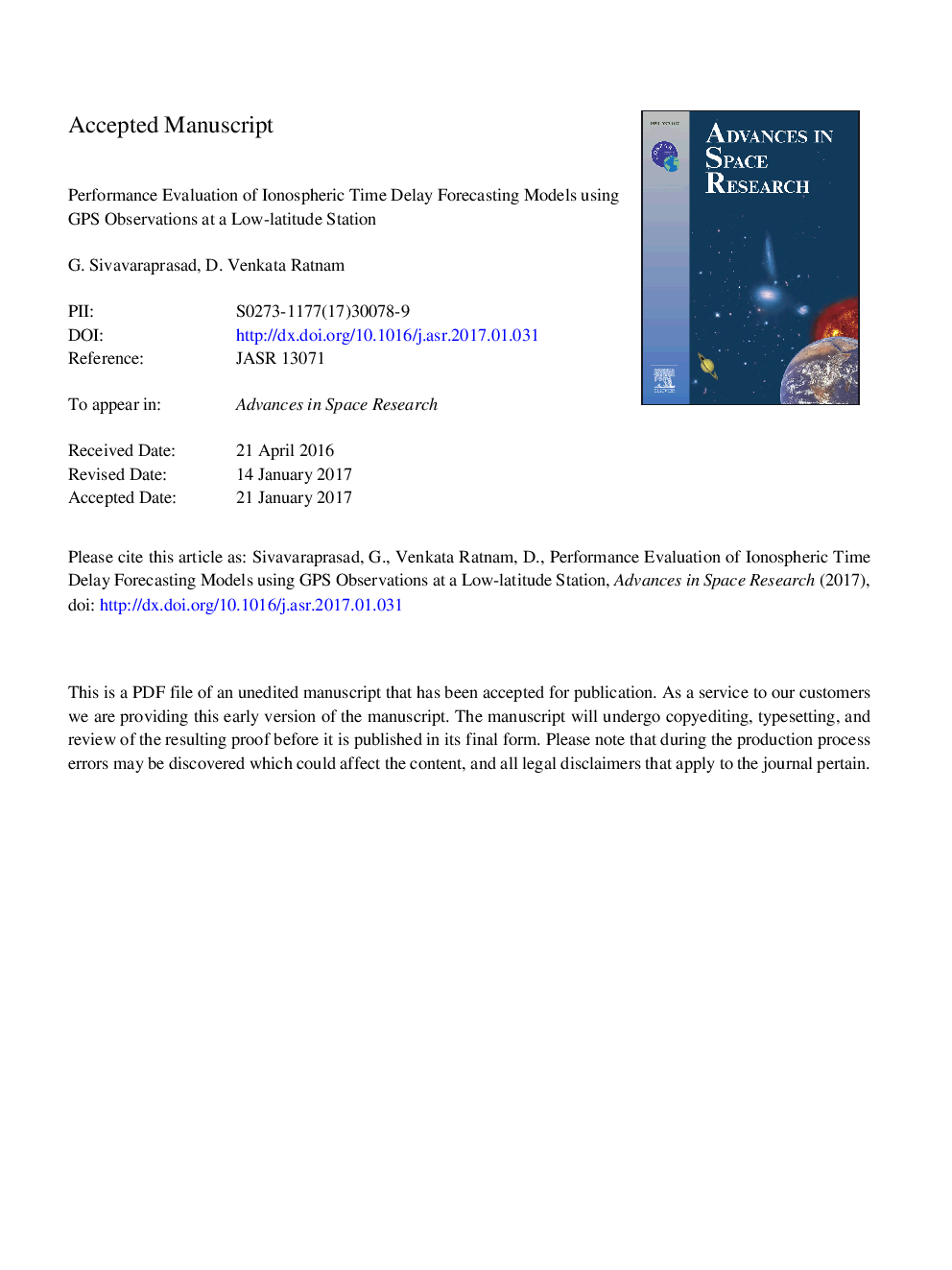| کد مقاله | کد نشریه | سال انتشار | مقاله انگلیسی | نسخه تمام متن |
|---|---|---|---|---|
| 5486178 | 1399451 | 2017 | 24 صفحه PDF | دانلود رایگان |
عنوان انگلیسی مقاله ISI
Performance evaluation of ionospheric time delay forecasting models using GPS observations at a low-latitude station
دانلود مقاله + سفارش ترجمه
دانلود مقاله ISI انگلیسی
رایگان برای ایرانیان
کلمات کلیدی
موضوعات مرتبط
مهندسی و علوم پایه
علوم زمین و سیارات
علوم فضا و نجوم
پیش نمایش صفحه اول مقاله

چکیده انگلیسی
Ionospheric delay is one of the major atmospheric effects on the performance of satellite-based radio navigation systems. It limits the accuracy and availability of Global Positioning System (GPS) measurements, related to critical societal and safety applications. The temporal and spatial gradients of ionospheric total electron content (TEC) are driven by several unknown priori geophysical conditions and solar-terrestrial phenomena. Thereby, the prediction of ionospheric delay is challenging especially over Indian sub-continent. Therefore, an appropriate short/long-term ionospheric delay forecasting model is necessary. Hence, the intent of this paper is to forecast ionospheric delays by considering day to day, monthly and seasonal ionospheric TEC variations. GPS-TEC data (January 2013-December 2013) is extracted from a multi frequency GPS receiver established at K L University, Vaddeswaram, Guntur station (geographic: 16.37°N, 80.37°E; geomagnetic: 7.44°N, 153.75°E), India. An evaluation, in terms of forecasting capabilities, of three ionospheric time delay models - an Auto Regressive Moving Average (ARMA) model, Auto Regressive Integrated Moving Average (ARIMA) model, and a Holt-Winter's model is presented. The performances of these models are evaluated through error measurement analysis during both geomagnetic quiet and disturbed days. It is found that, ARMA model is effectively forecasting the ionospheric delay with an accuracy of 82-94%, which is 10% more superior to ARIMA and Holt-Winter's models. Moreover, the modeled VTEC derived from International Reference Ionosphere, IRI (IRI-2012) model and new global TEC model, Neustrelitz TEC Model (NTCM-GL) have compared with forecasted VTEC values of ARMA, ARIMA and Holt-Winter's models during geomagnetic quiet days. The forecast results are indicating that ARMA model would be useful to set up an early warning system for ionospheric disturbances at low latitude regions.
ناشر
Database: Elsevier - ScienceDirect (ساینس دایرکت)
Journal: Advances in Space Research - Volume 60, Issue 2, 15 July 2017, Pages 475-490
Journal: Advances in Space Research - Volume 60, Issue 2, 15 July 2017, Pages 475-490
نویسندگان
G. Sivavaraprasad, D. Venkata Ratnam,